Your Ultimate Guide to the Arrowhead Plant (Without the Headaches)
So you’ve got an Arrowhead Plant, or you’re thinking about getting one. Good choice! People always label this one as “easy,” and while that’s not exactly wrong, it’s a bit like calling a smartphone “easy”—sure, but you’ll get a lot more out of it if you know what the buttons actually do.
In this article
I’ve spent years working with these plants, and I’ve seen them merely survive in a sad corner, and I’ve seen them absolutely flourish. The difference is just a little bit of know-how. This plant has a cool double life: it starts out as a neat, bushy little thing and then, as it gets older, it wants to stretch out and vine. Understanding that dual nature is the real key to making it happy.
Forget the generic advice. Let’s get into what actually works.
Your Beginner’s Shopping List
Before we dive in, let’s get you set up for success without breaking the bank. Here’s a quick checklist of what you’ll need:
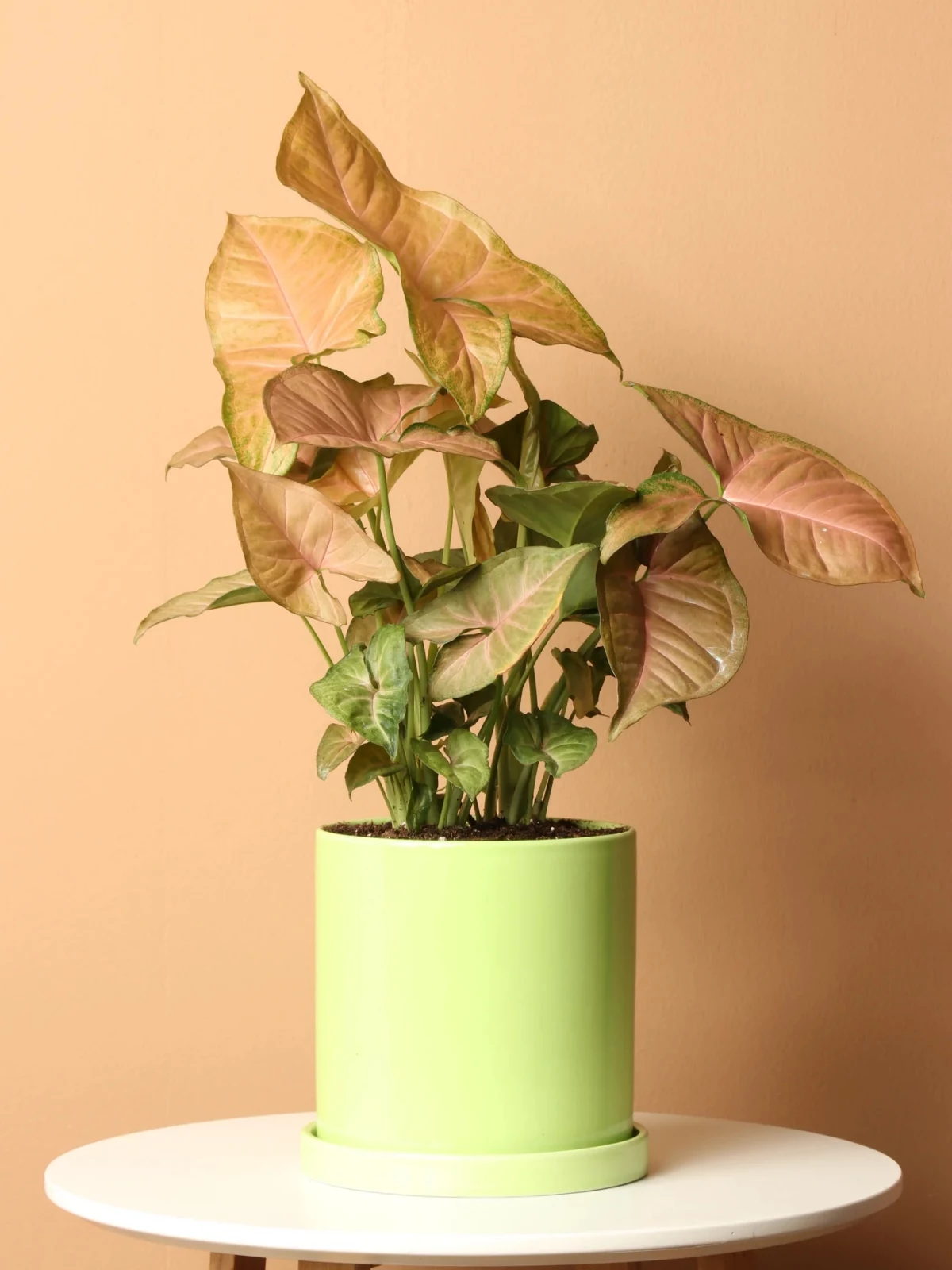
- A pot with drainage holes: Non-negotiable! This will cost you anywhere from $5 for a basic plastic pot to $30+ for something ceramic and stylish.
- A bag of quality potting mix: The base for our soil. Around $10.
- A small bag of perlite: For aeration. You can find this at Home Depot or any garden center for about $5-$7.
- A small bag of orchid bark: For that chunky, rainforest-floor feel. Also about $7-$10.
Oh yeah, and if you want it to climb later? Grab a moss pole. A decent one will run you about $10-$20. See? Not a massive investment for a plant that will look amazing.
The Big Three: Light, Water, and Soil
Get these three things right, and you’re 90% of the way there. Seriously.
Light: Finding the Sweet Spot
You’ll hear “low-light tolerant,” but let’s be real, that means “will tolerate dying slowly in the dark.” For a thriving, vibrant Arrowhead Plant, you want bright, indirect light. Think of it like this: it wants to see the sky, but it doesn’t want the sun to be staring right at it.
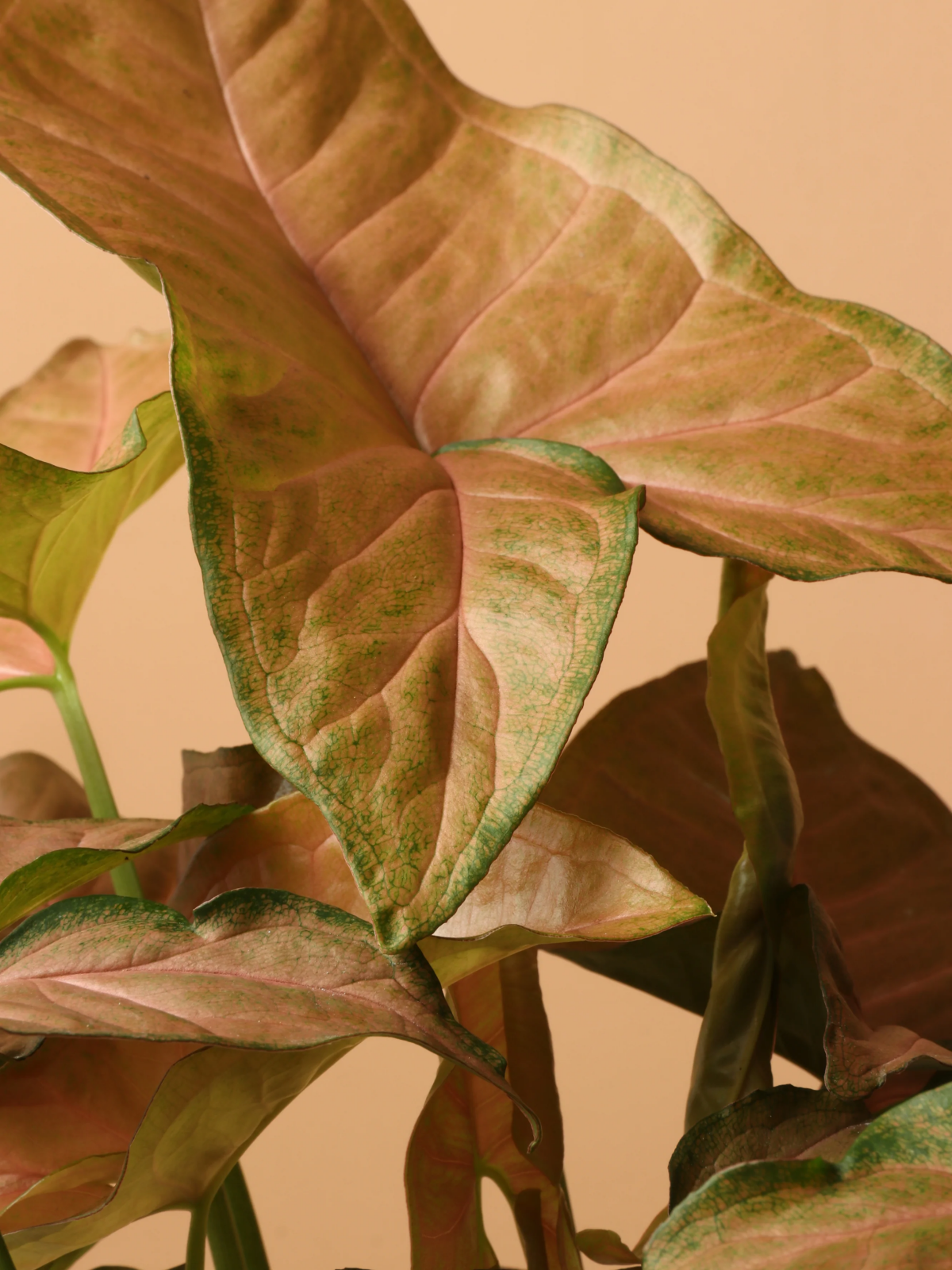
Quick tip: Not sure what “bright, indirect light” actually looks like? Do the shadow test. Hold your hand up about a foot from the wall. If it casts a soft, blurry shadow, you’ve nailed it. If it’s a sharp, dark shadow, that’s direct sun—too intense and likely to scorch the leaves, leaving ugly brown patches.
Too little light, and your plant will get all long and “leggy,” with tiny leaves. The gorgeous colors on varieties like the pink or white ones will also fade to a dull green as the plant desperately tries to produce more chlorophyll to compensate.
Watering (Without Drowning Your Plant)
This is where most people go wrong. The number one killer of these plants is root rot from overwatering. The roots need oxygen, and when the soil is constantly soaked, they suffocate and die. It’s a sad, soggy end.
So, here’s the trick: let the top 1-2 inches of soil get completely dry before you water again. Just stick your finger in there to check. After a while, you’ll even get a feel for it by lifting the pot—a dry pot is surprisingly light compared to a freshly watered one.
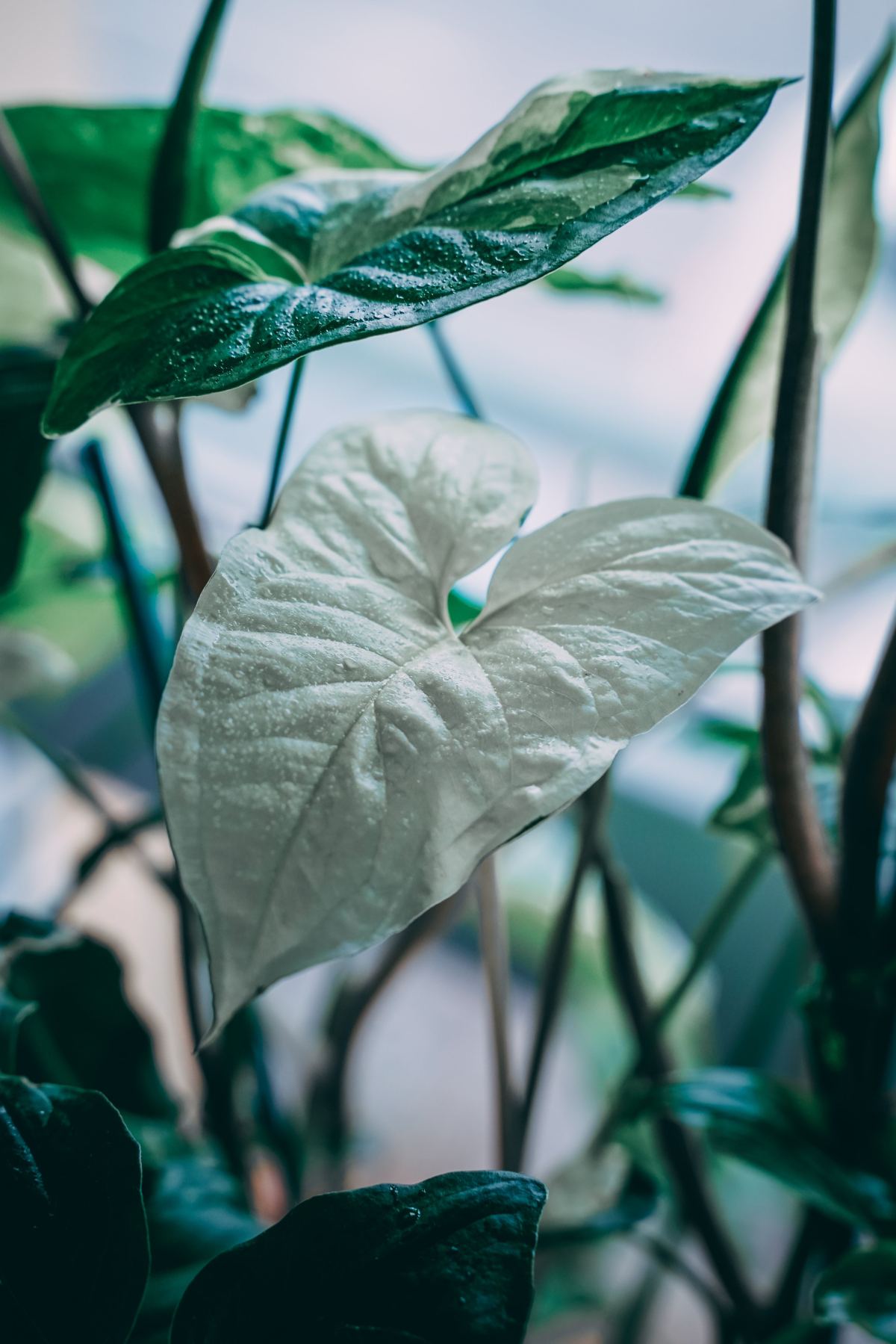
When you do water, do it properly. Take the plant to the sink and give it a thorough soak until water runs freely out the drainage holes. Then—and this is critical—let it drain completely. Don’t EVER let it sit in a saucer full of water. That’s just a swamp waiting to happen.
The Perfect Soil Mix
That standard, all-purpose potting soil from a bag? It’s usually way too dense. It holds water like a sponge, which is exactly what we don’t want. I always mix my own, and it’s super easy. Here’s my go-to recipe:
- One part potting mix
- One part perlite
- One part orchid bark
Mix it all together, and you get a light, chunky, airy blend that the roots will absolutely love. It gives them the perfect balance of moisture and oxygen, mimicking their natural environment.
Creating the Vibe: Humidity & Food
Arrowhead Plants are tropical, so they appreciate a bit of a spa-like atmosphere. Our homes, especially with the A/C or heat blasting, are basically deserts by comparison.
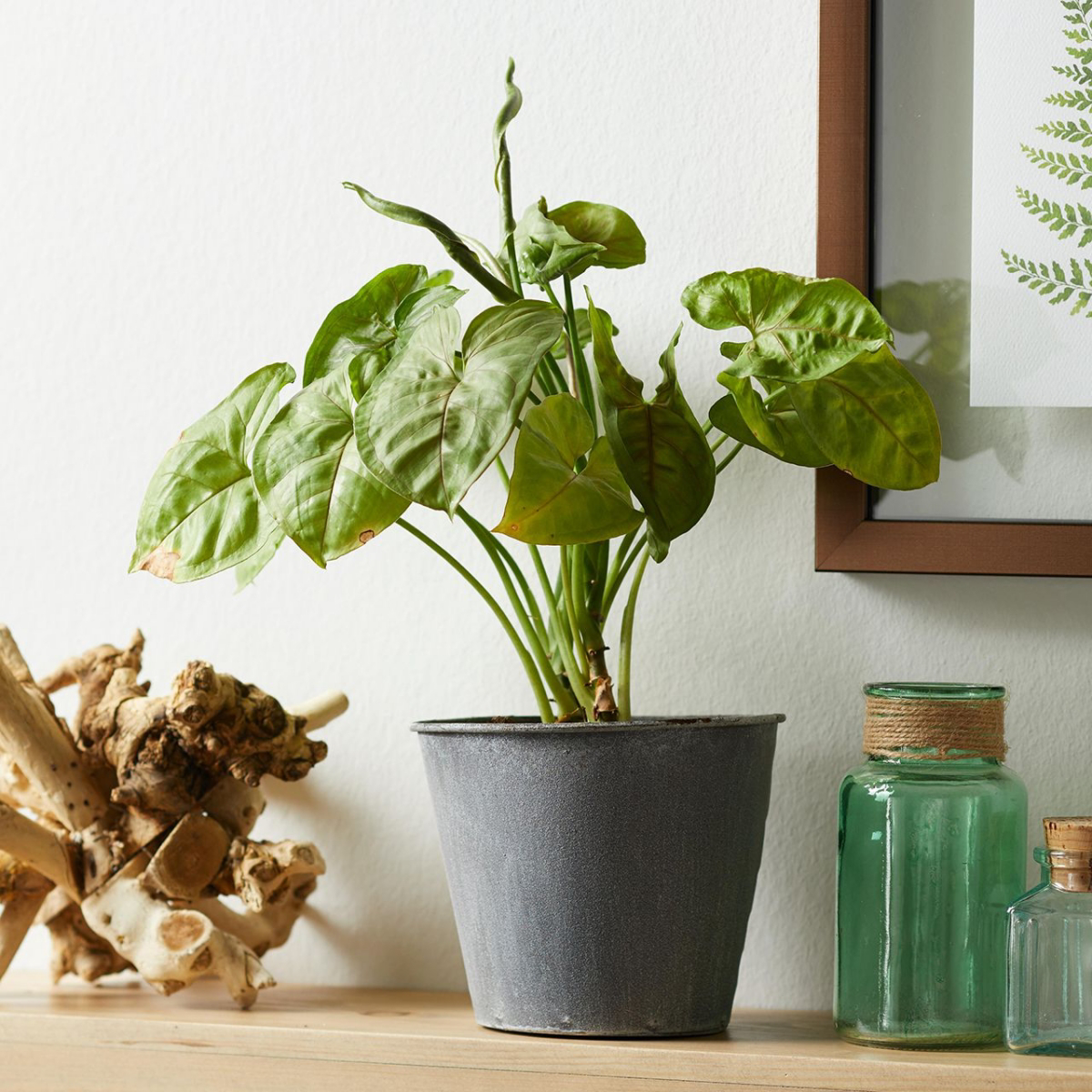
If you see brown, crispy leaf edges, your plant is begging for more humidity. Misting is a temporary fix that evaporates in minutes. A better solution is to group your plants together to create a little humid microclimate. But honestly, the best long-term fix is a small humidifier. You don’t need a fancy one; a reliable small-room model usually costs between $25 and $50 and makes a world of difference.
When it comes to food, they aren’t heavy eaters. During the spring and summer growing season, I feed mine once a month with a balanced, all-purpose liquid fertilizer, but I dilute it to half or even a quarter of the recommended strength. Over-fertilizing can burn the roots, so less is more. In the fall and winter, I stop completely. The plant is resting, and it doesn’t need the extra nutrients.
Shaping Your Plant: To Prune or to Climb?
Here’s where you get to decide what you want your plant to look like. Do you want it to stay a full, bushy plant for your desk, or do you want it to become a magnificent climbing vine?
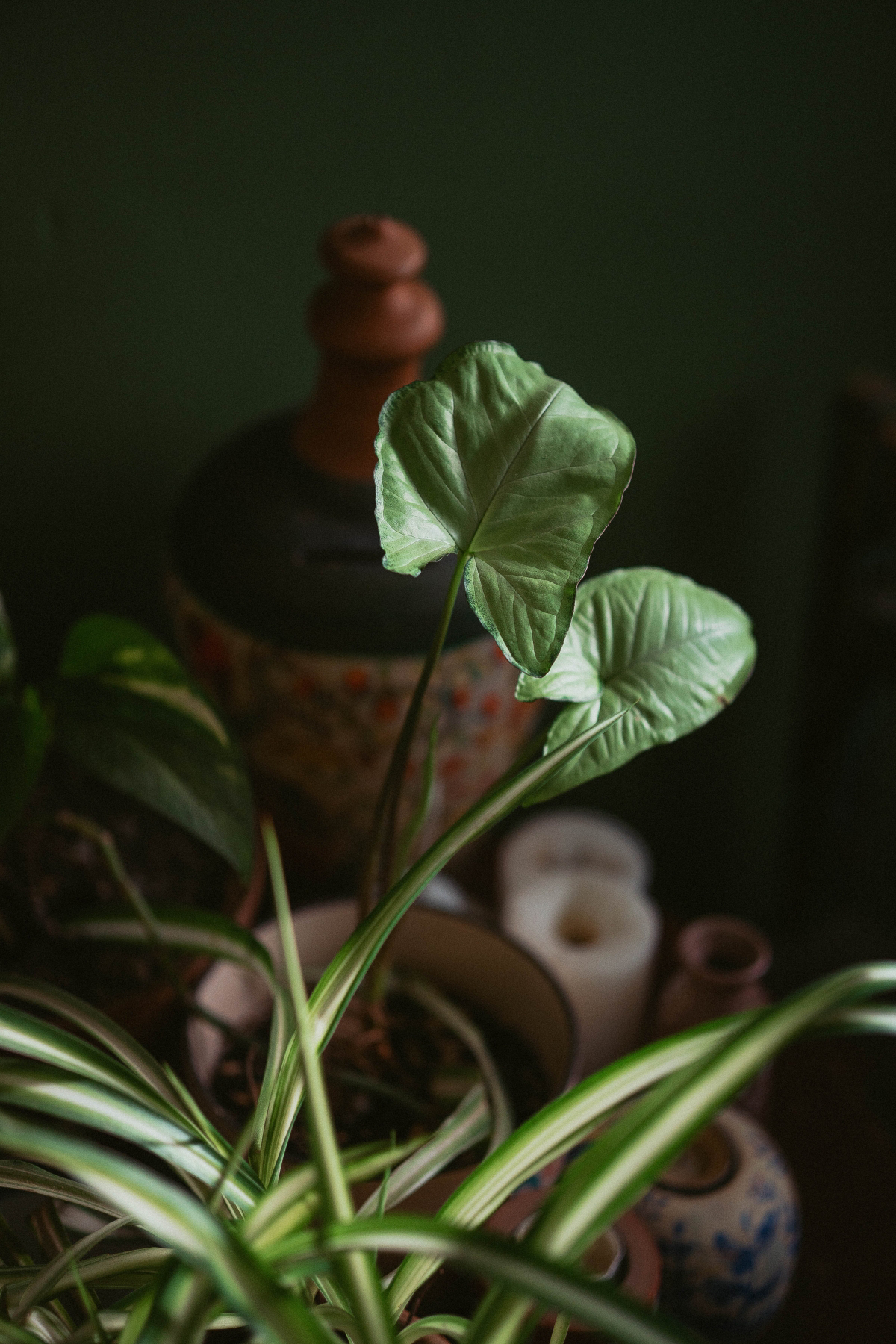
For a bushy plant, you just need to prune it. Don’t be shy! When you snip off the end of a vine, the plant redirects its energy to create new growth further back, making it fuller. To keep it super dense, you’ll probably want to snip off the longest vines every month or two during the growing season. Plus, you can use the cuttings to make new plants!
If you want it to climb, give it a moss pole. Gently attach the vines to the pole, and it will start to dig its aerial roots into the moss. This upward growth is the signal for the plant to mature, and you’ll be rewarded with those cool, multi-lobed leaves you rarely see otherwise.
Heads up on repotting: These guys don’t mind being a little snug in their pot. When you do repot, only go up about 1-2 inches in pot diameter. A pot that’s way too big will hold excess water for too long, bringing us right back to the risk of root rot.
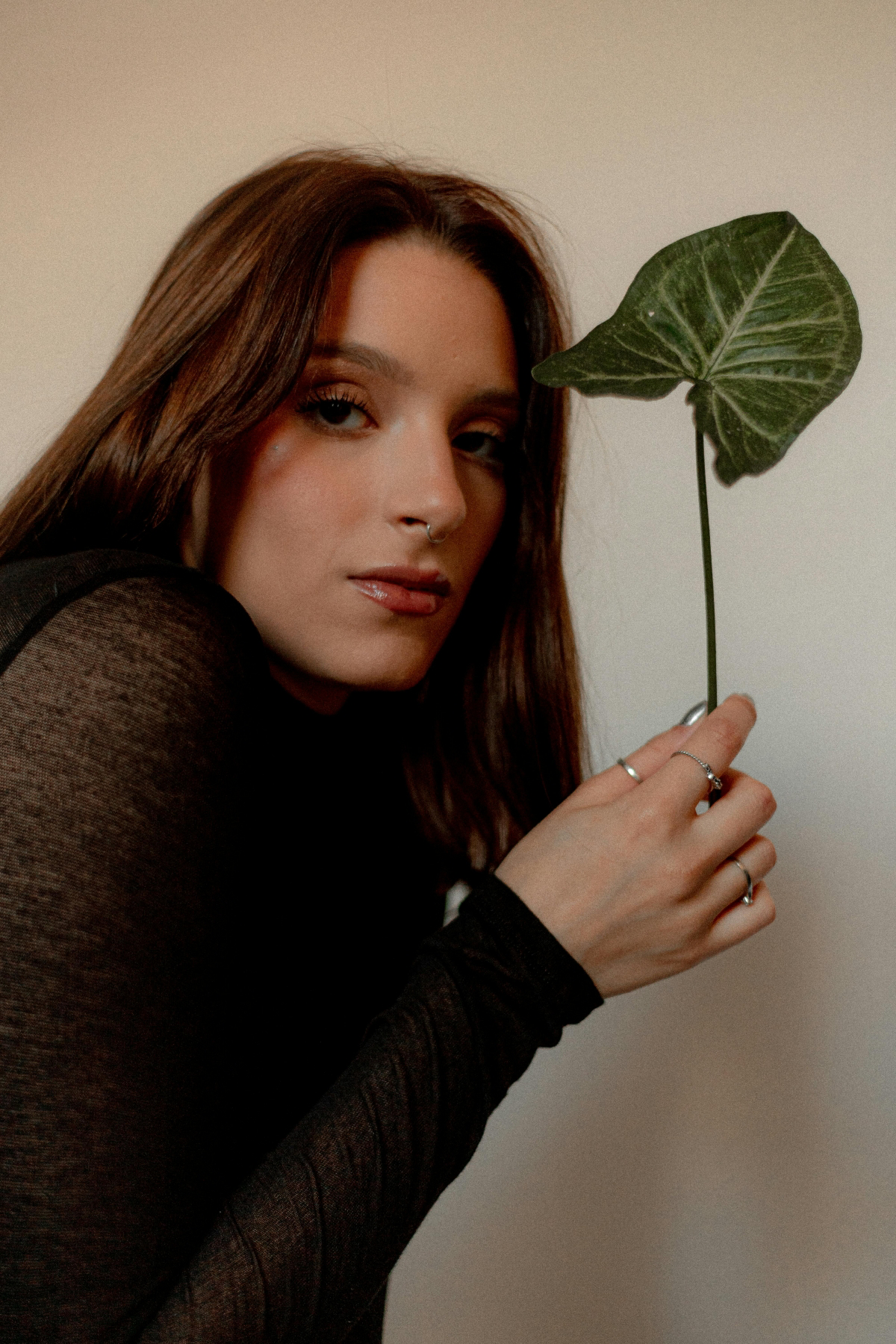
Making More Plants (For Free!)
Propagation is incredibly easy. Just take a cutting that has at least one leaf and one node (the little bump on the stem where the leaf grows). You can either stick it in a jar of water and wait for roots to grow—which is fun to watch—or you can plant it directly into moist soil. From my experience, cuttings started in soil tend to be a little stronger once they get going, but both methods work great.
A quick note on the fancy ‘Albo Variegata’ variety: it’s a stunner, but be warned. When you propagate it, a cutting can sometimes revert to all-green or, more problematically, produce an all-white ‘ghost’ leaf. These pure white leaves have no chlorophyll and can’t sustain themselves, so they’ll eventually die off. It’s just part of the fun of growing these highly variegated plants!
Uh Oh… What’s Wrong With My Plant?
Even the best of us run into problems. Here’s a quick rundown of common issues.
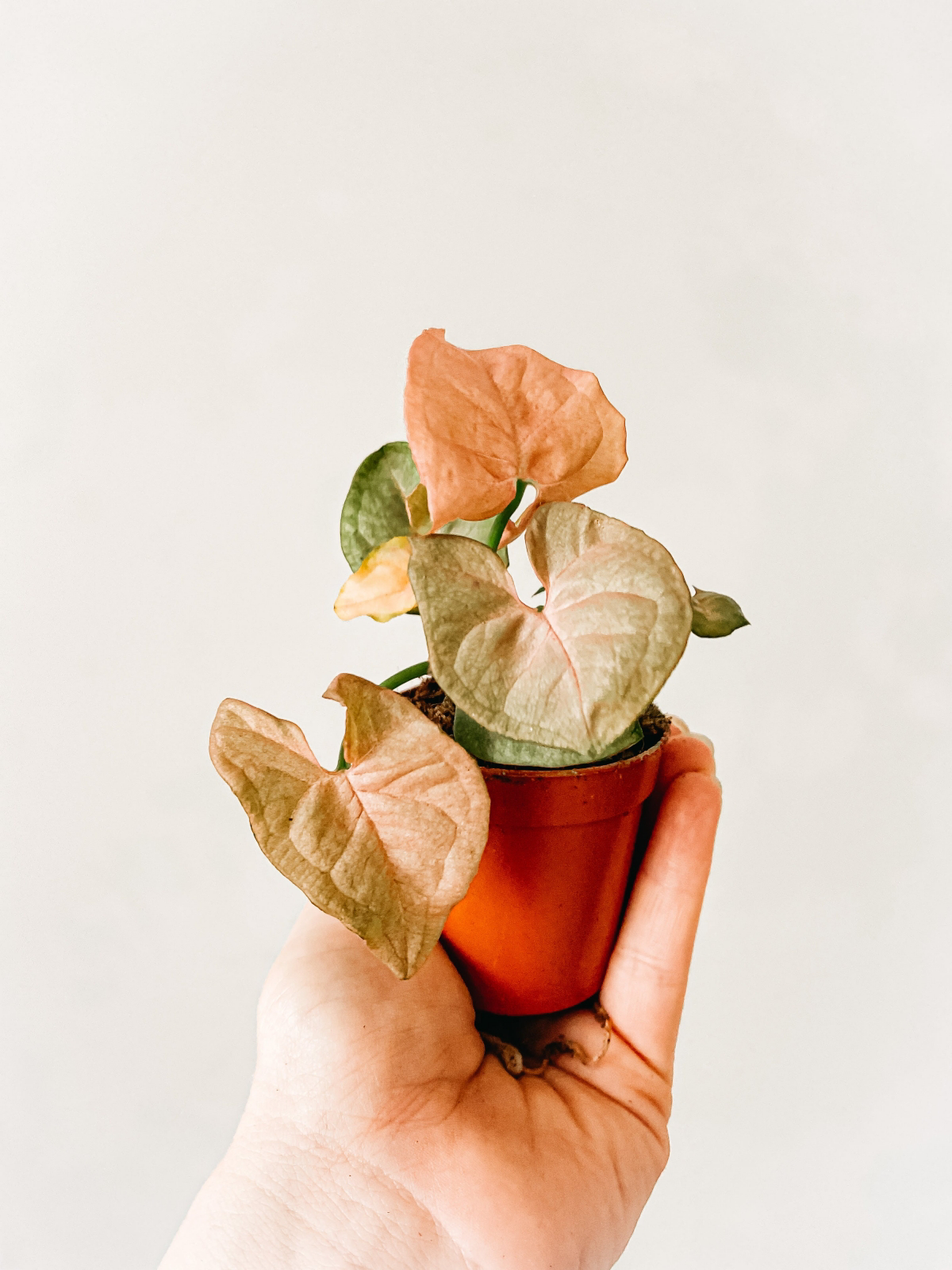
Seeing yellow leaves? Nine times out of ten, this is your plant screaming, “I’m drowning!” You’re likely overwatering. Let that soil dry out completely before you even think about watering it again.
Got brown, crispy leaf tips? That’s almost always a cry for more humidity. If you’re using tap water, it could also be a buildup of minerals. Try leaving your water out overnight or using filtered water to see if that helps.
Is your plant droopy and wilted? This one is tricky because it can mean both too much or too little water. Use your finger to check the soil. If it’s bone dry, give it a drink. But if the soil is wet and the plant is wilting, you’ve probably got root rot. The damaged roots can’t absorb water, so the plant is wilting despite being in wet soil. You’ll need to unpot it, trim off any black, mushy roots with clean scissors, and repot in fresh, chunky soil.
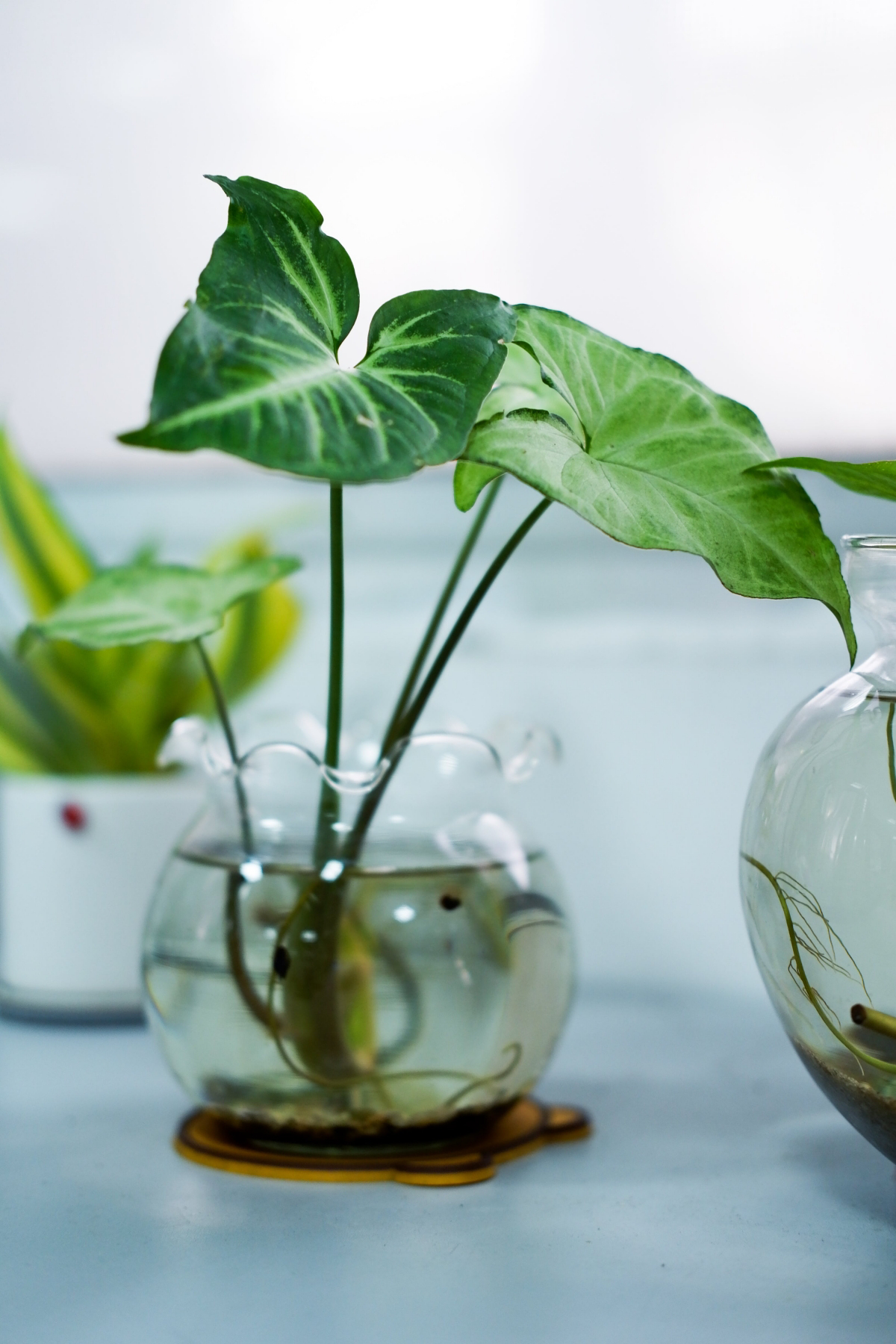
Pesky pests? The most common culprits are spider mites (look for fine webbing) and mealybugs (look for white, cottony fluff). For either, a good first step is a strong spray-down in the shower. Then, follow up with an insecticidal soap, making sure you get the undersides of the leaves. It might take a couple of treatments to fully kick them out.
A CRITICAL Safety Warning
I can’t stress this enough: All parts of the Arrowhead Plant are toxic to cats, dogs, and humans if chewed on or ingested. The plant contains tiny, needle-like crystals that cause immediate and painful irritation and swelling in the mouth and throat. If you have curious pets or small children, this is not the plant for you. Please place it well out of reach or choose a pet-safe alternative. Safety first, always.
At the end of the day, the Arrowhead Plant is a joy to grow. It’s dynamic, beautiful, and with this knowledge, it’s not difficult at all. You’ve got this!
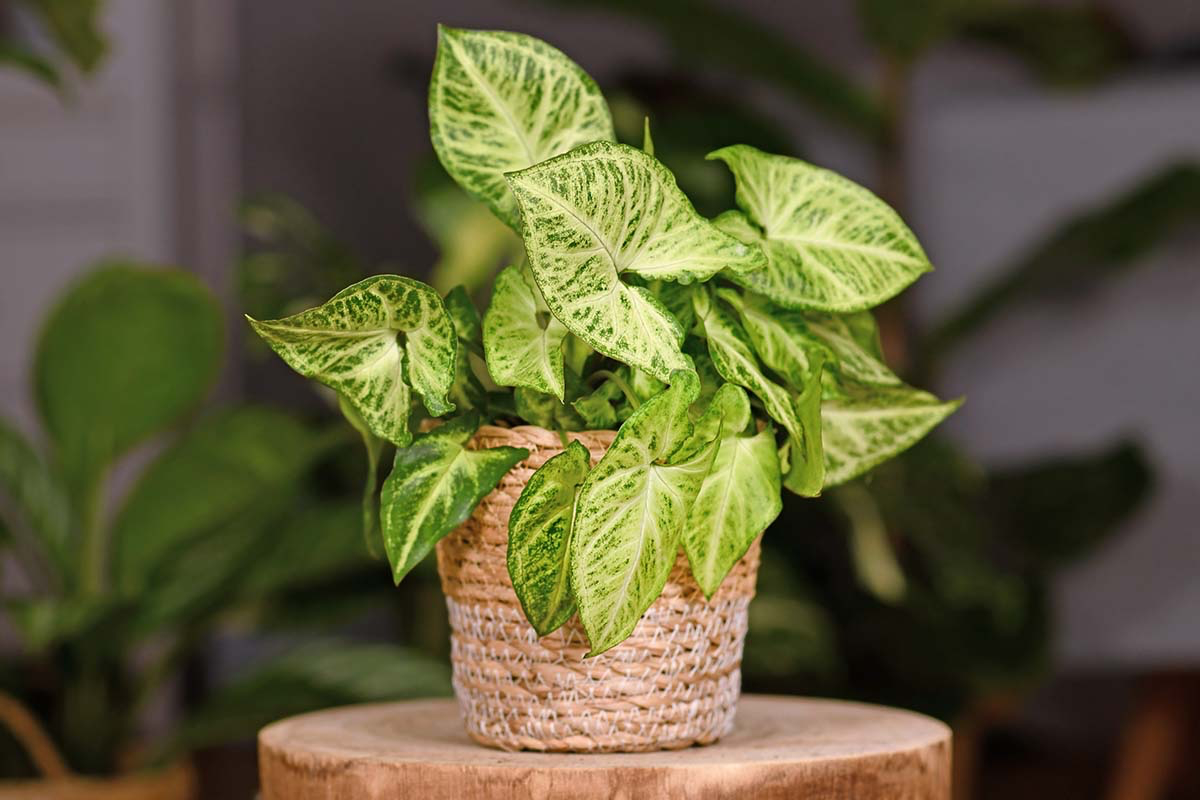
Galerie d’inspiration
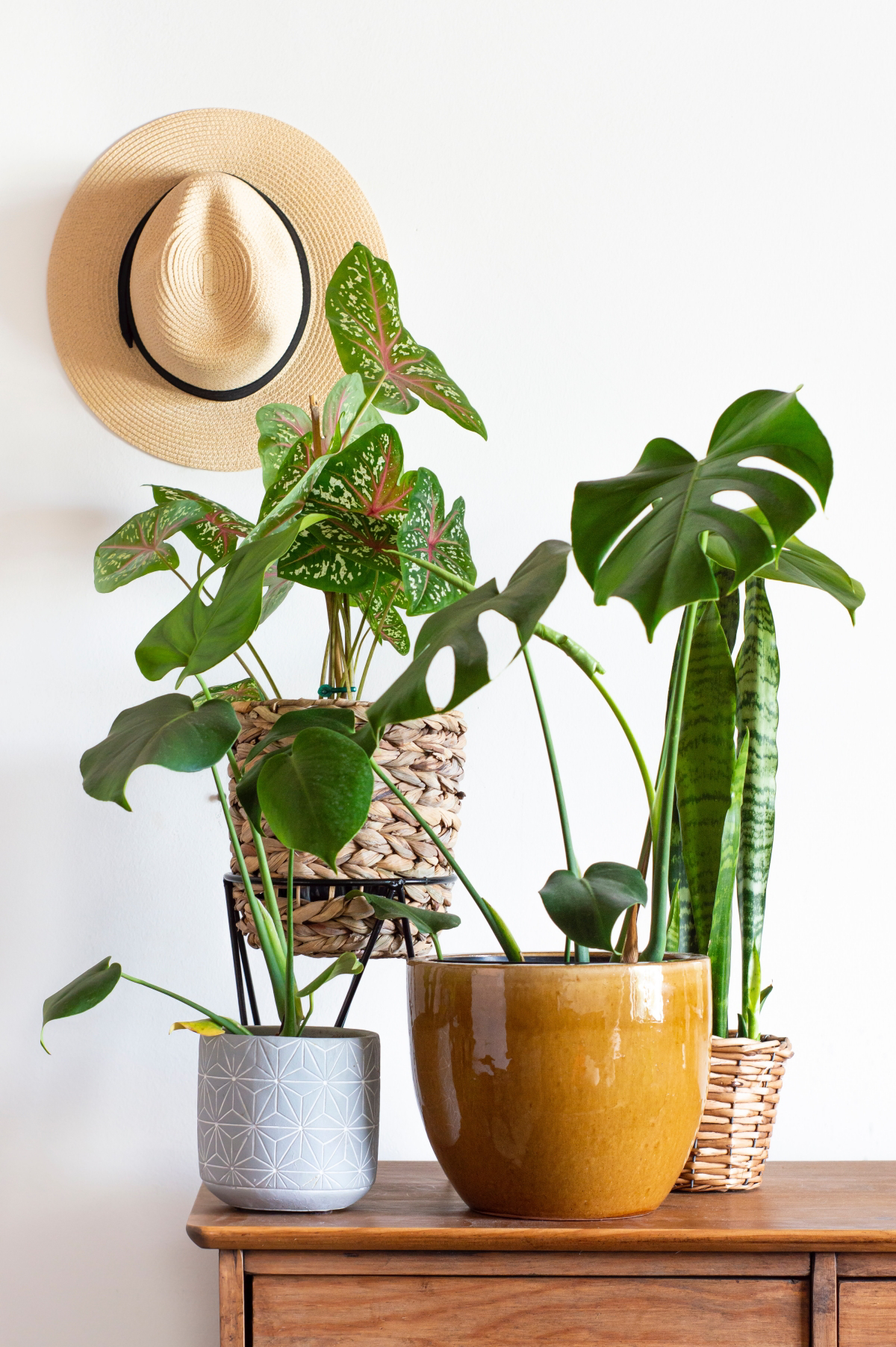
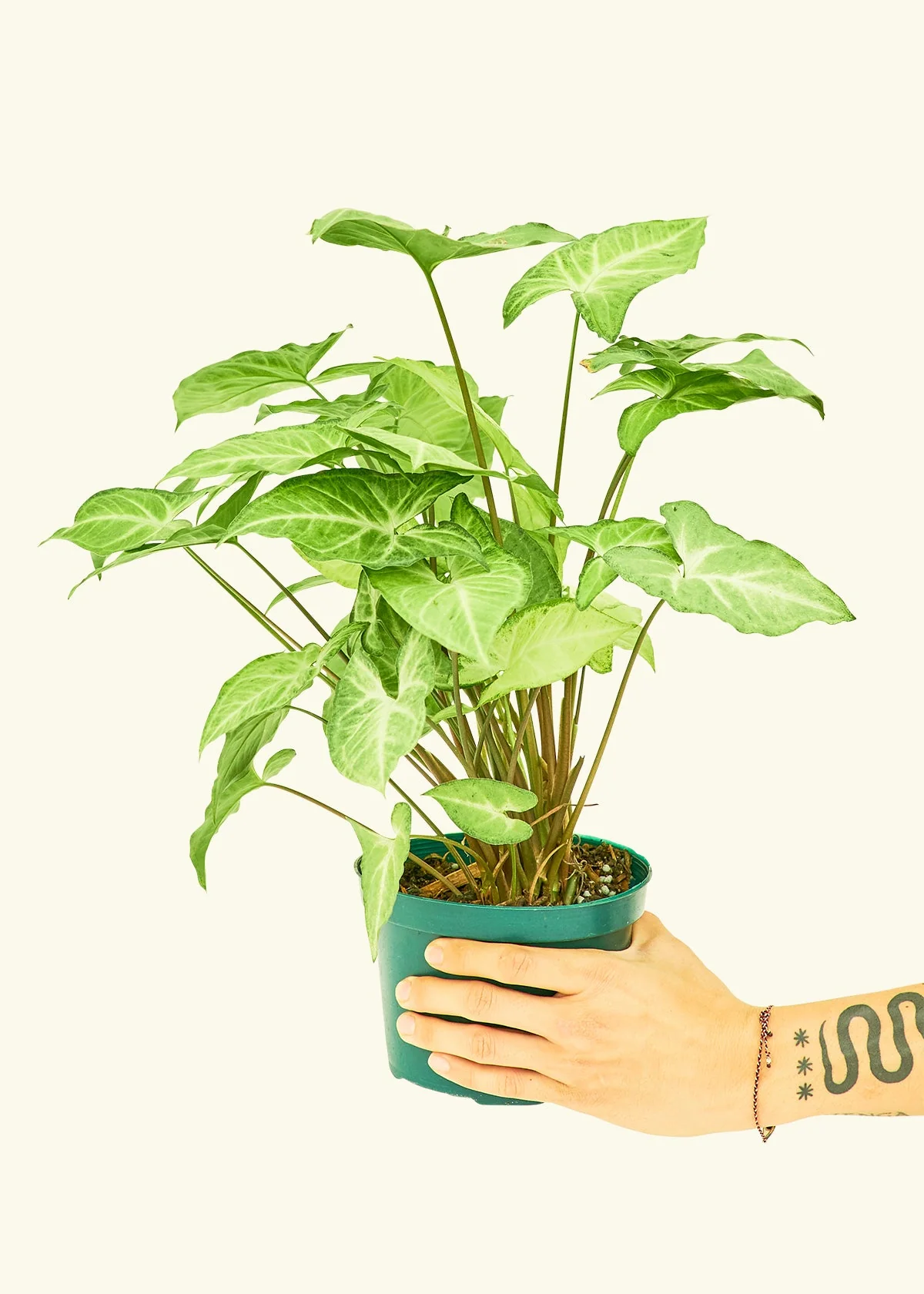
My Arrowhead Plant is getting long and stringy. How can I make it look bushy again?
That’s the plant’s natural vining habit kicking in! To encourage a fuller, more compact shape, you need to prune it. Don’t be shy! Snip off the longest trailing stems right after a leaf node (where a leaf meets the stem). This tells the plant to redirect its energy into producing new growth from the base and along the remaining stems, resulting in a denser look. Plus, you can pop those cuttings in water to propagate new plants!
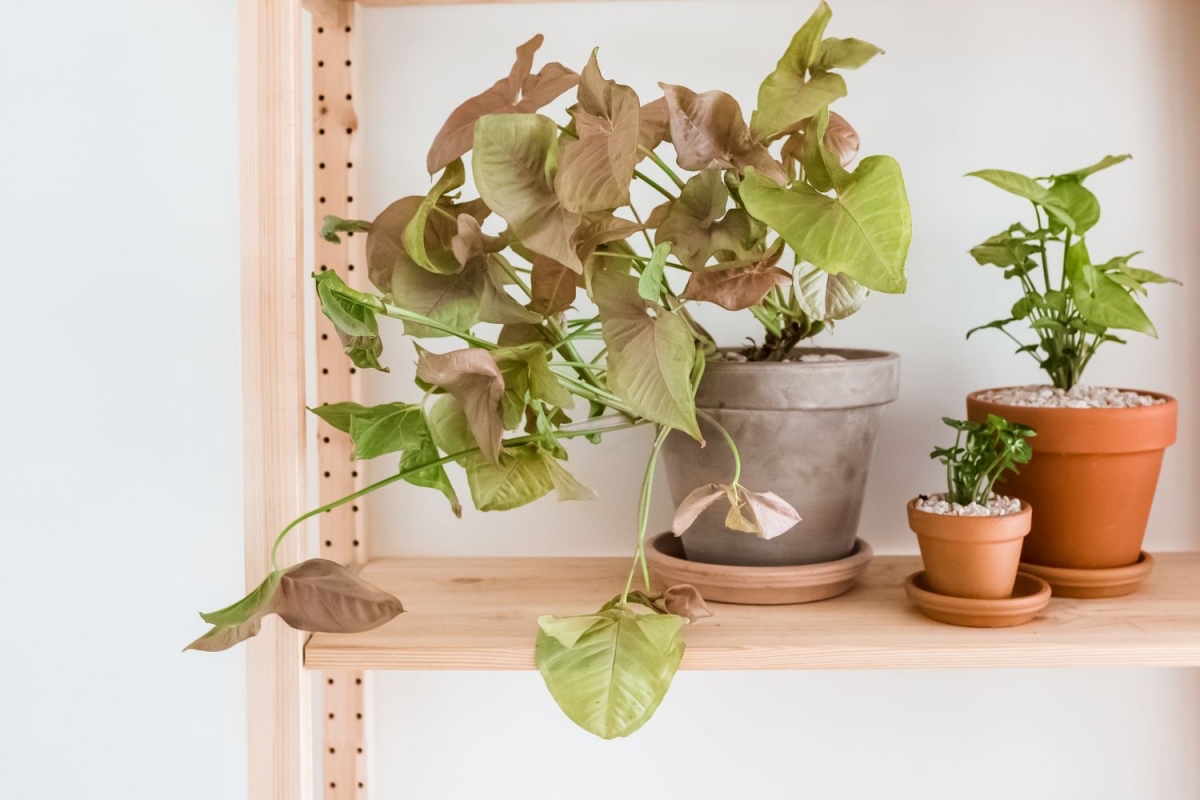
There are over 30 recognized species of Syngonium and hundreds of cultivated varieties, offering a staggering palette of colors and patterns.
This isn’t just a single green plant; it’s a collector’s dream. The range is wild, from the soft, dusty pink of the ‘Pink Allusion’ to the ghostly pale green of the ‘Moonshine’ or the classic creamy-white variegation of the ‘White Butterfly’. Exploring these different cultivars is a perfect way to add pops of unique color to your indoor jungle without needing to learn a whole new care routine.
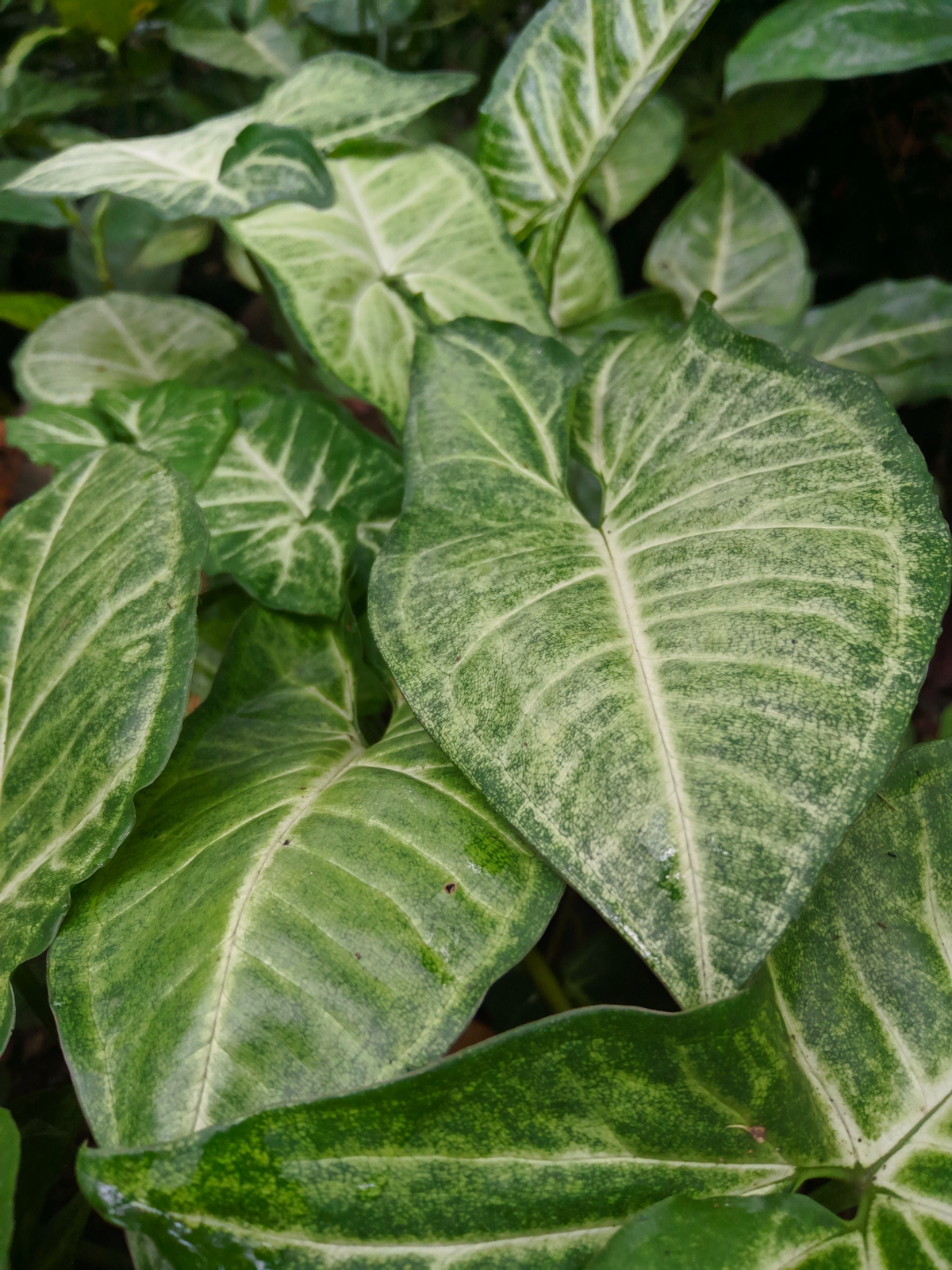
Moss Pole: Ideal for encouraging mature, larger leaves. The aerial roots of the Arrowhead will physically grow into a quality sphagnum moss pole (brands like Mossify are great), mimicking how it climbs trees in nature. This provides both support and a source of moisture.
Simple Stake: A bamboo or metal trellis provides basic support to keep vines from flopping. It’s a great budget-friendly or minimalist option, but it won’t encourage the same mature leaf development as a moss pole.
For that lush, tropical look, the moss pole is the clear winner.
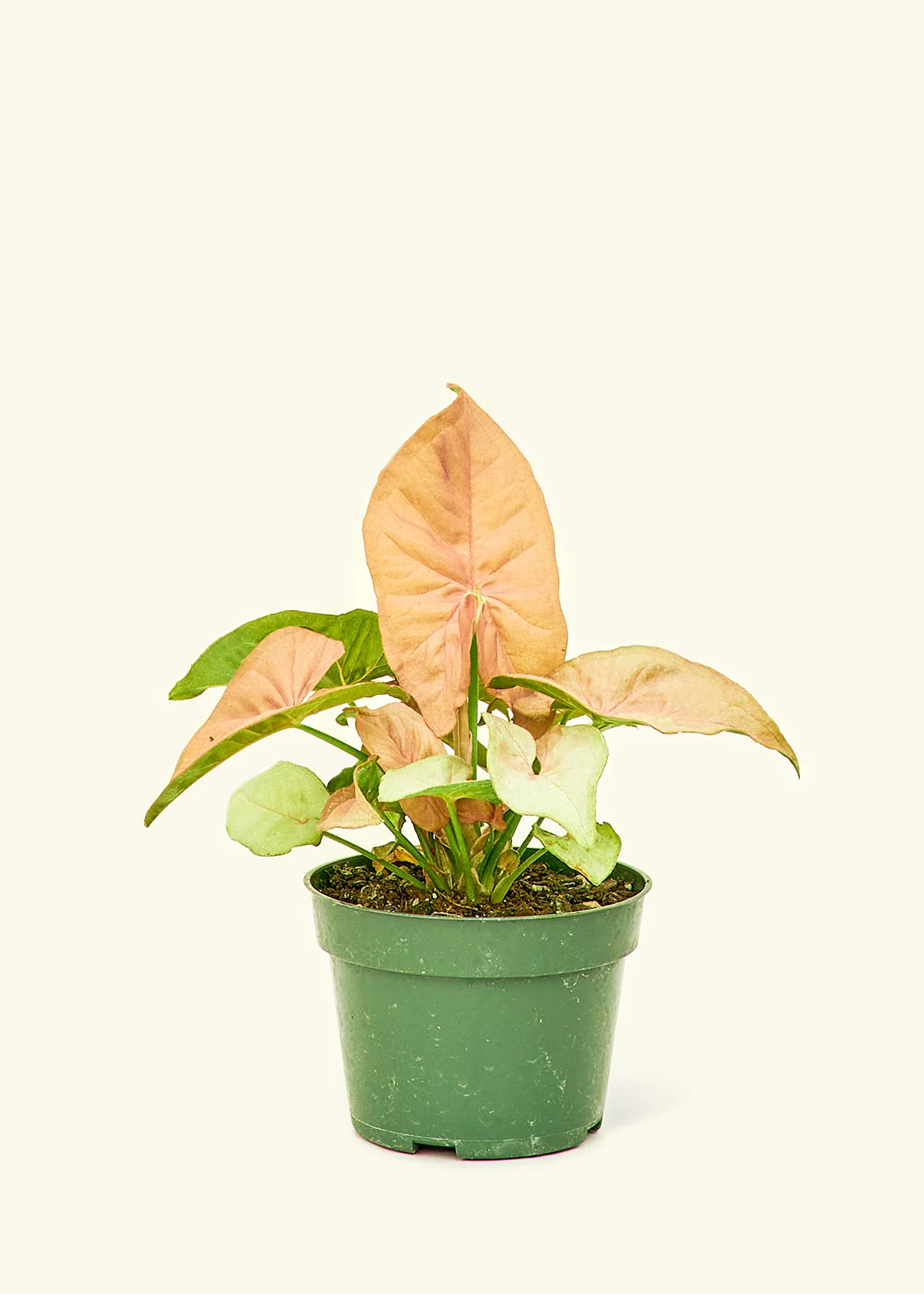
- Its leaves feel soft and slightly limp.
- The entire plant droops dramatically.
- The edges of the leaves start to look a little crispy or brown.
- The pot feels noticeably lighter when you pick it up.
The secret? These are your plant’s SOS signals for water. It’s often better to wait for one of these subtle cues than to water on a strict, unforgiving schedule.
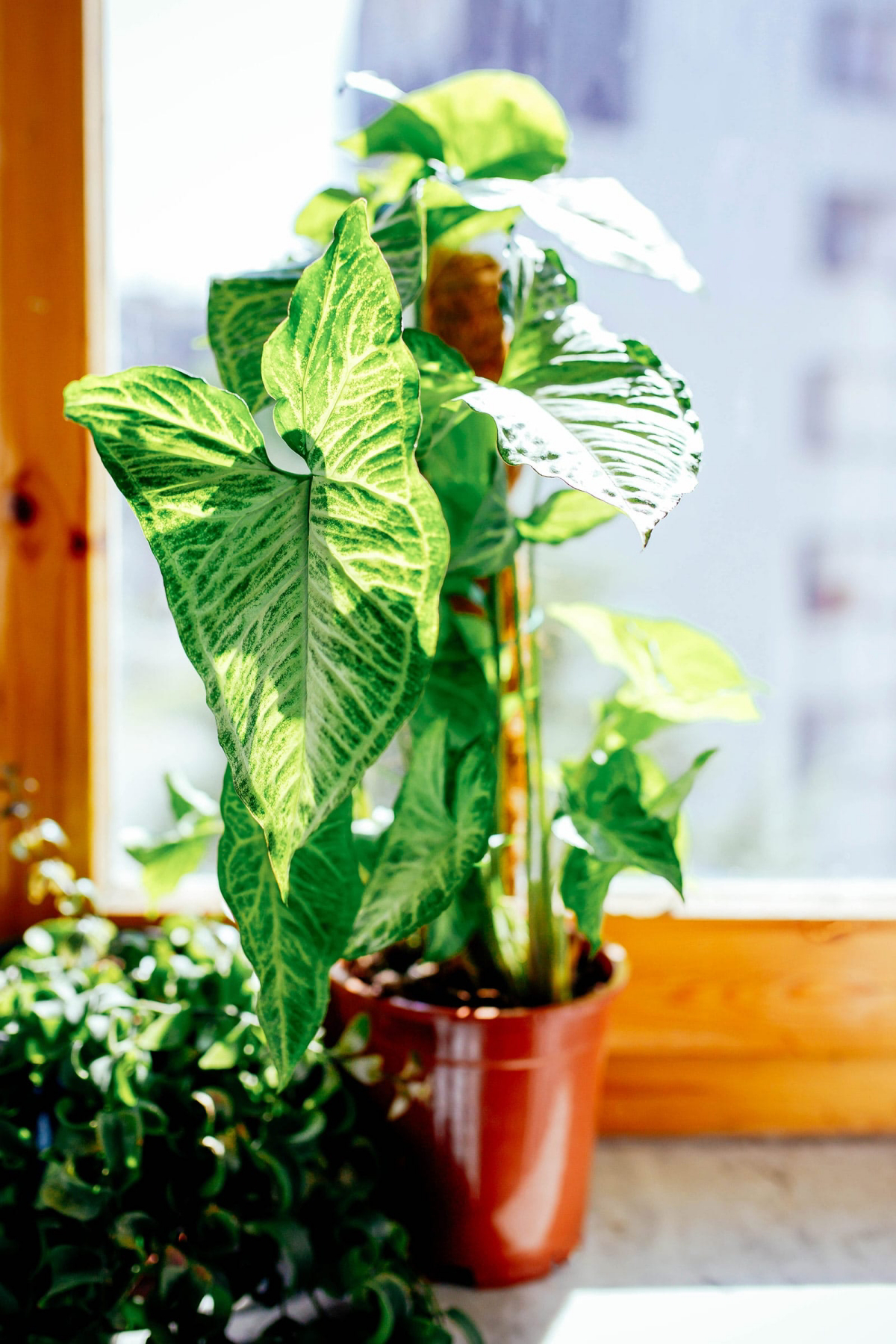
Don’t just feed your plant—feed its soil. Once a month during the growing season (spring and summer), add a balanced liquid fertilizer, like Espoma’s Indoor! liquid plant food, diluted to half-strength. Over-fertilizing can burn the roots and cause yellowing leaves, so less is always more. Think of it as a light snack, not a heavy meal.
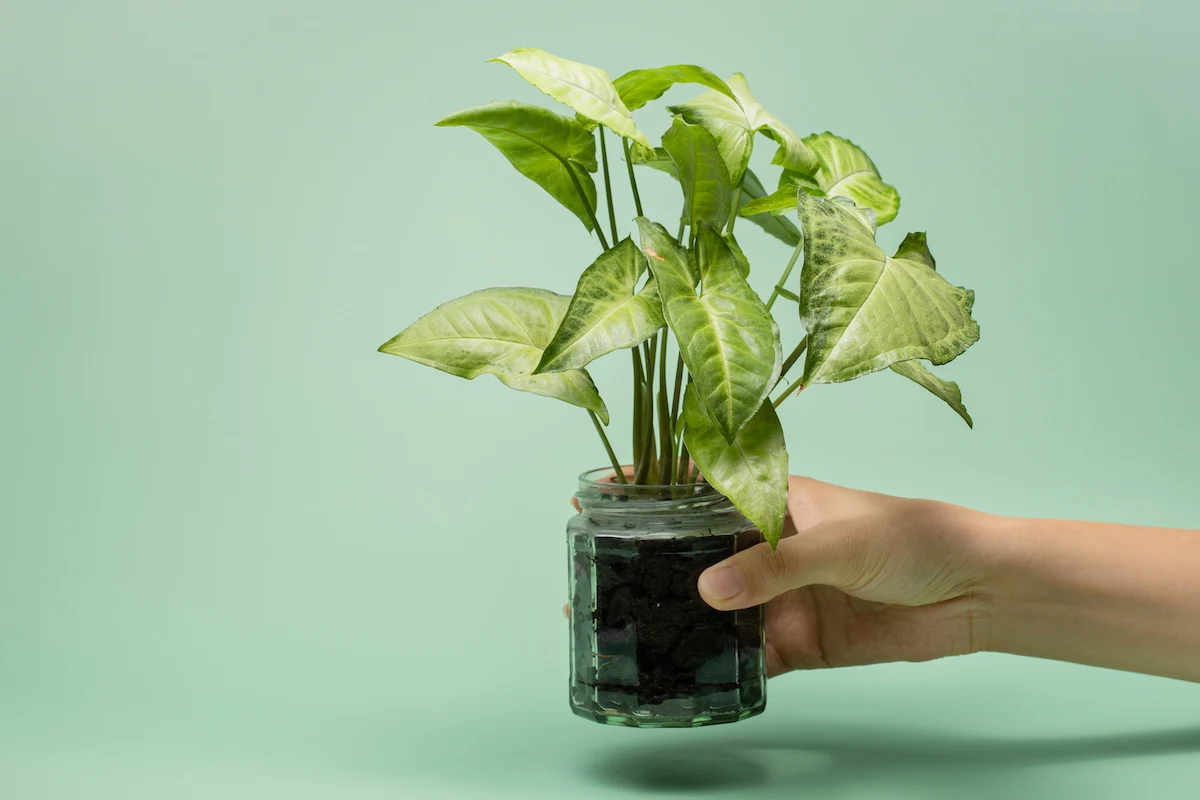
While not a top performer like the Snake Plant, a 1989 NASA study noted Syngonium’s ability to help filter airborne toxins like benzene, formaldehyde, and xylene from the air.
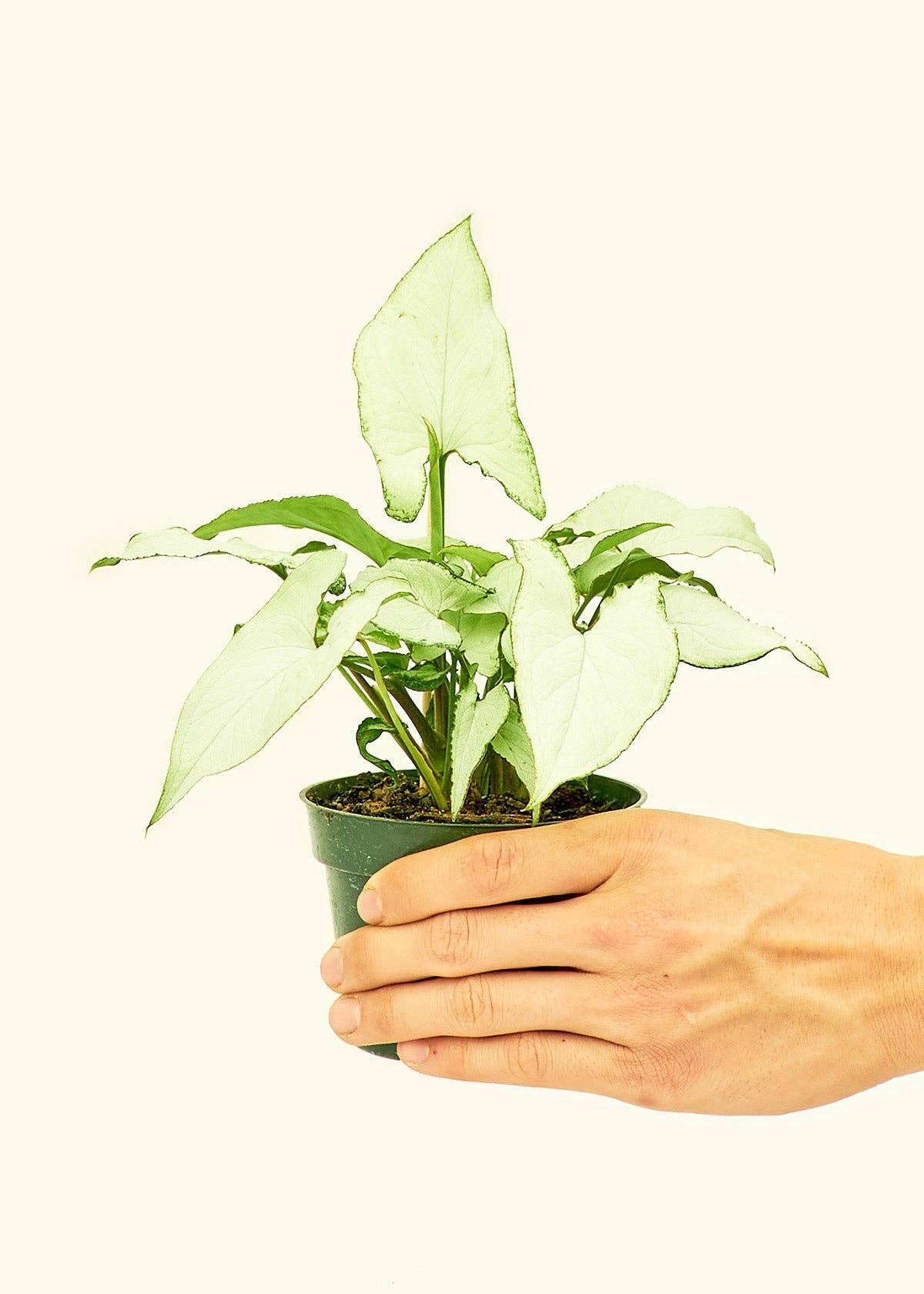
The beauty of an Arrowhead Plant’s foliage is best appreciated up close. Dust and hard water spots can dull its vibrant colors and even hinder photosynthesis. Once a month, give the leaves a gentle wipe-down. You can use a soft microfiber cloth dampened with water. For extra shine and pest prevention, add a tiny drop of neem oil to the water. It’s a spa day for your plant.
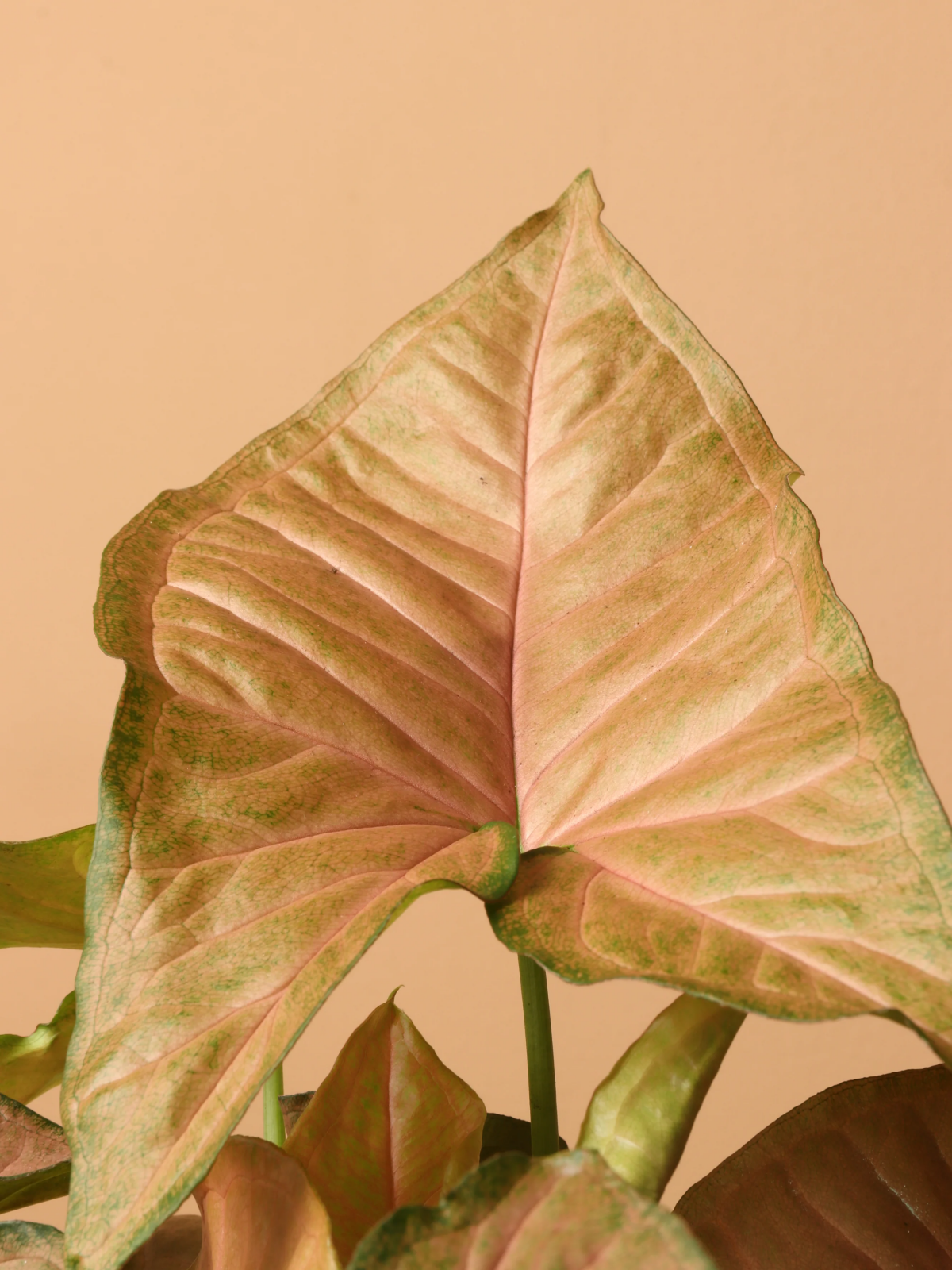
A crucial note for pet owners and parents: The Arrowhead Plant is beautiful, but it’s toxic if ingested. It contains insoluble calcium oxalate crystals, which can cause significant irritation, swelling of the mouth and throat, drooling, and vomiting in cats, dogs, and humans. Always place it on a high shelf or in a hanging basket, safely out of reach of curious paws and little hands.
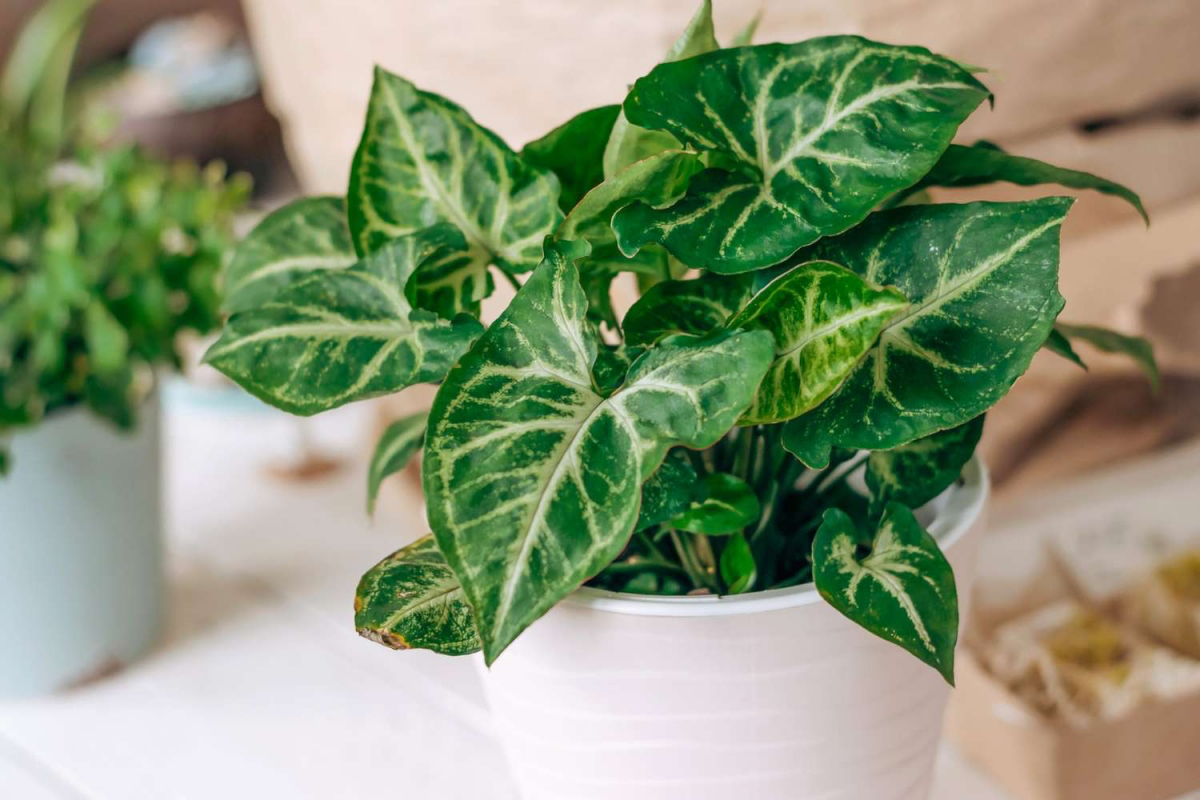
Want to create that steamy, rainforest atmosphere your Arrowhead craves, especially during dry winter months? Grouping it with other plants is a great first step. For an extra boost, place it near a small, quiet humidifier—models from Levoit are popular and effective. This targeted humidity helps prevent crispy leaf edges and can even deter spider mites, which thrive in dry conditions.
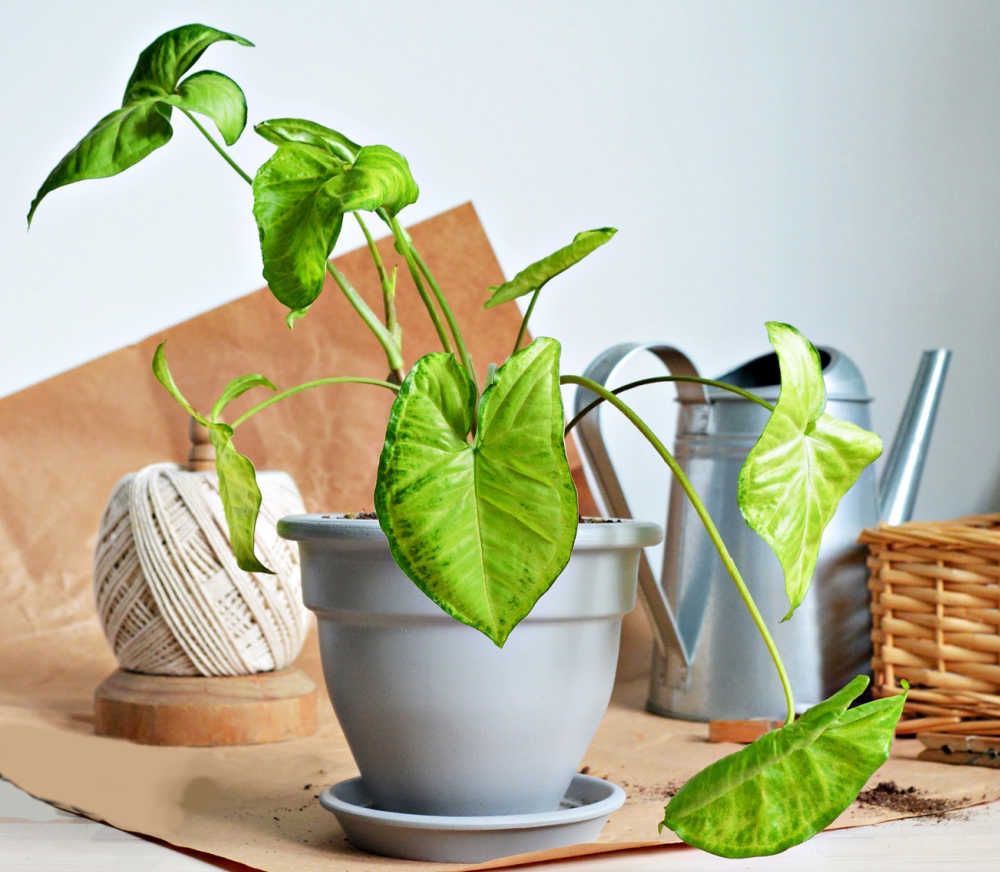
Thinking about creating a self-contained ecosystem? The Arrowhead Plant is a fantastic candidate for a closed terrarium.
- Its love for high humidity means it thrives in the enclosed environment.
- It stays relatively compact, especially dwarf varieties like ‘Pixie’.
- Its arrowhead-shaped leaves add wonderful texture and form.
Just ensure you provide a good drainage layer at the bottom and open the lid occasionally for air exchange to prevent any mold issues.
One of the greatest joys of the Arrowhead is how easily it shares the love. Propagating is almost foolproof. Simply snip a piece of vine that includes at least one leaf and one node (the little bump where the leaf stem meets the main vine). Place the cutting in a glass jar of water, ensuring the node is submerged. Within a couple of weeks, you’ll see white roots begin to sprout. It’s a fascinating process to watch!










